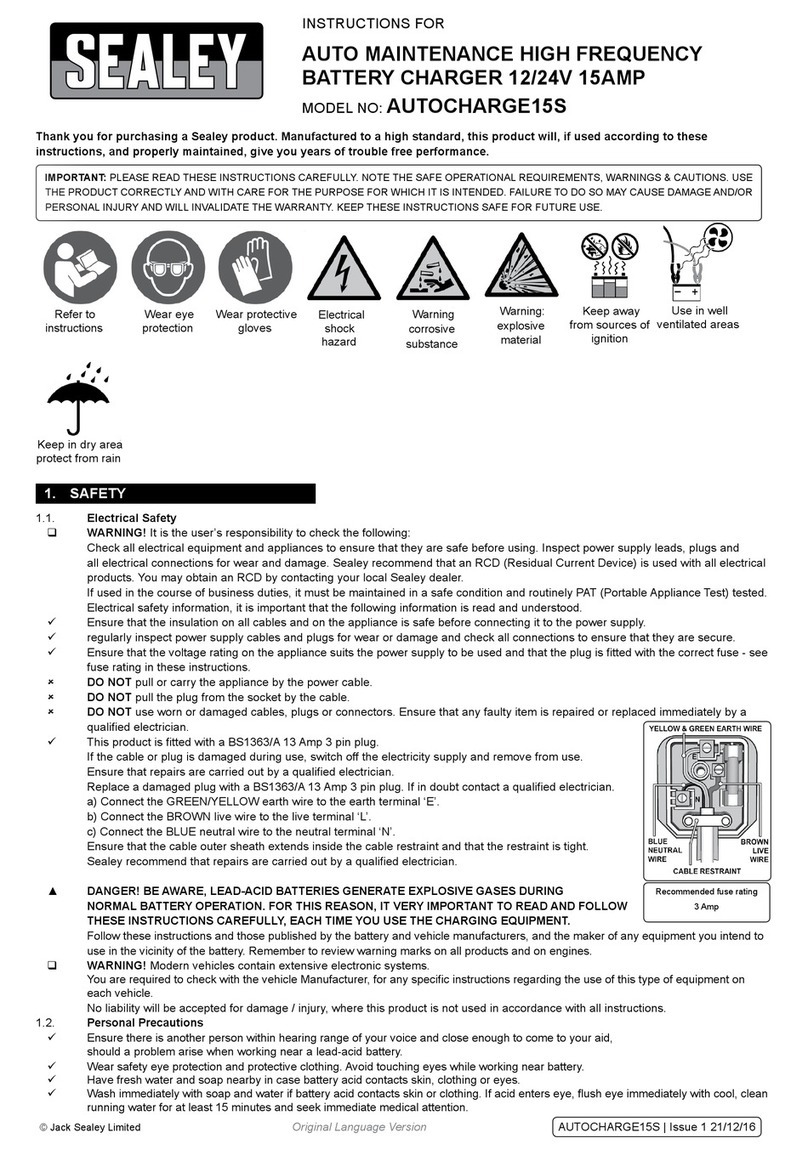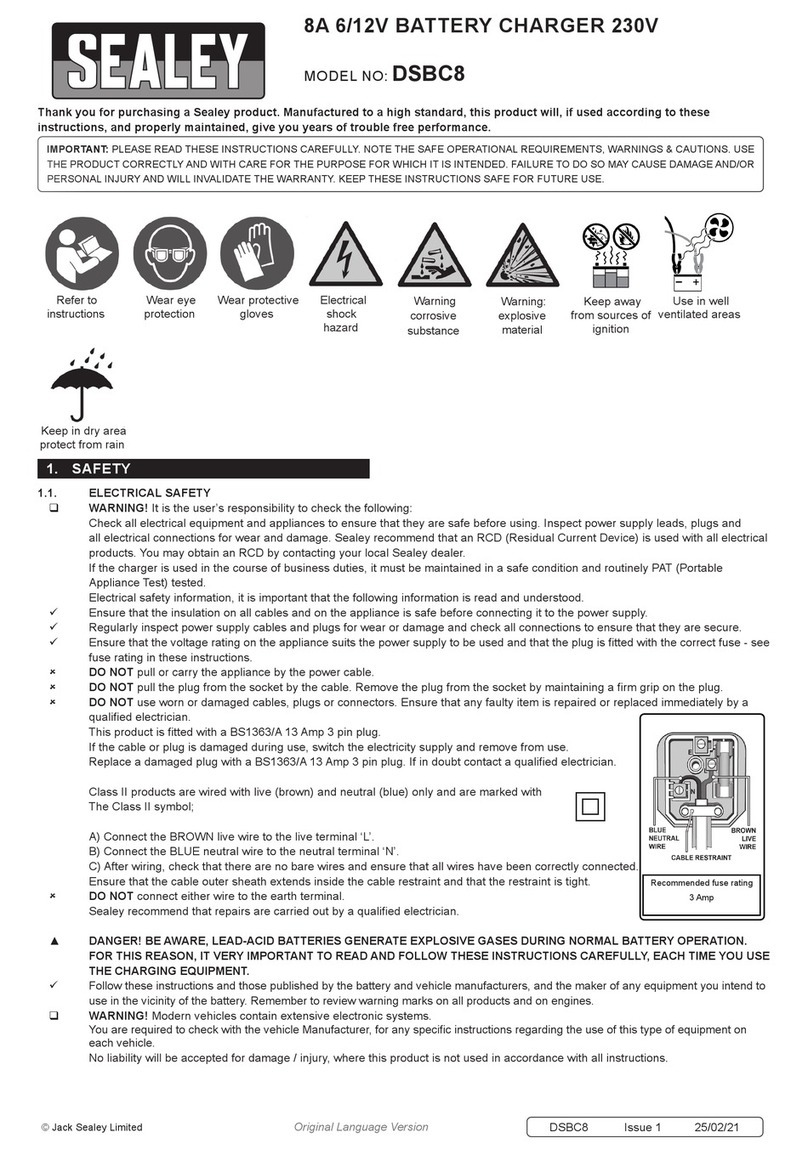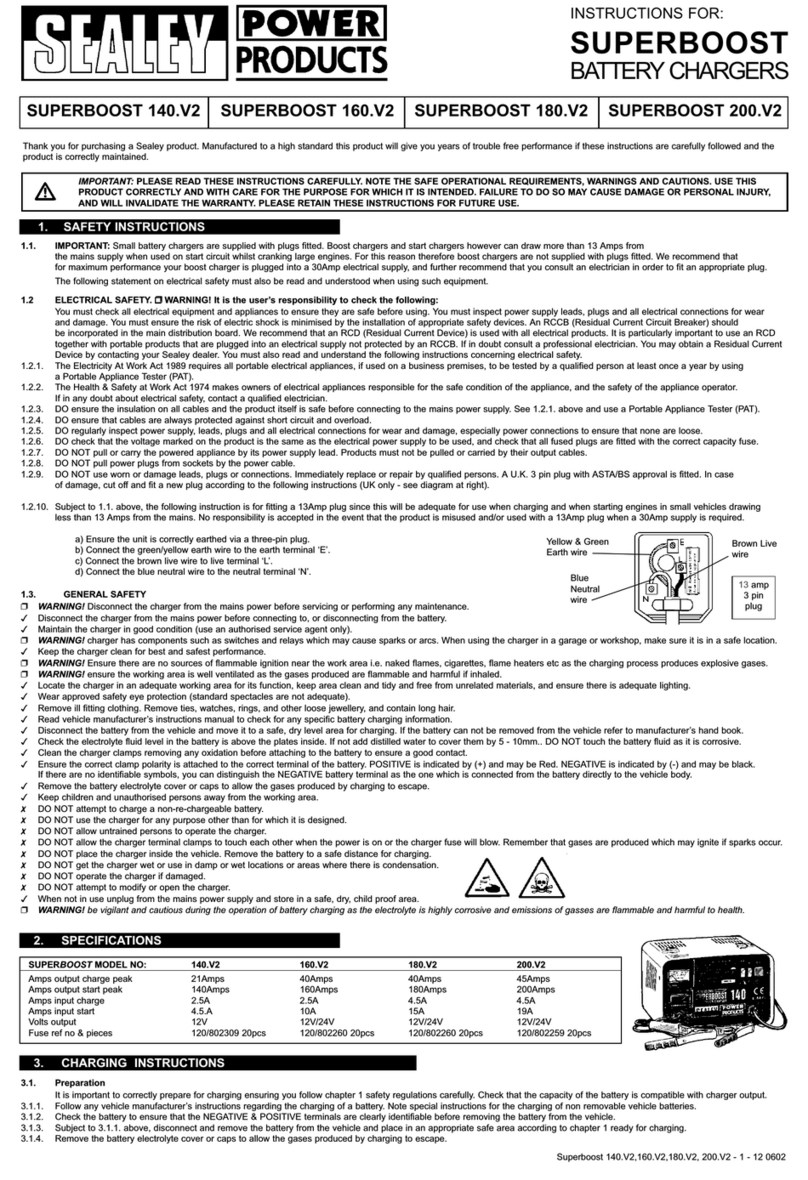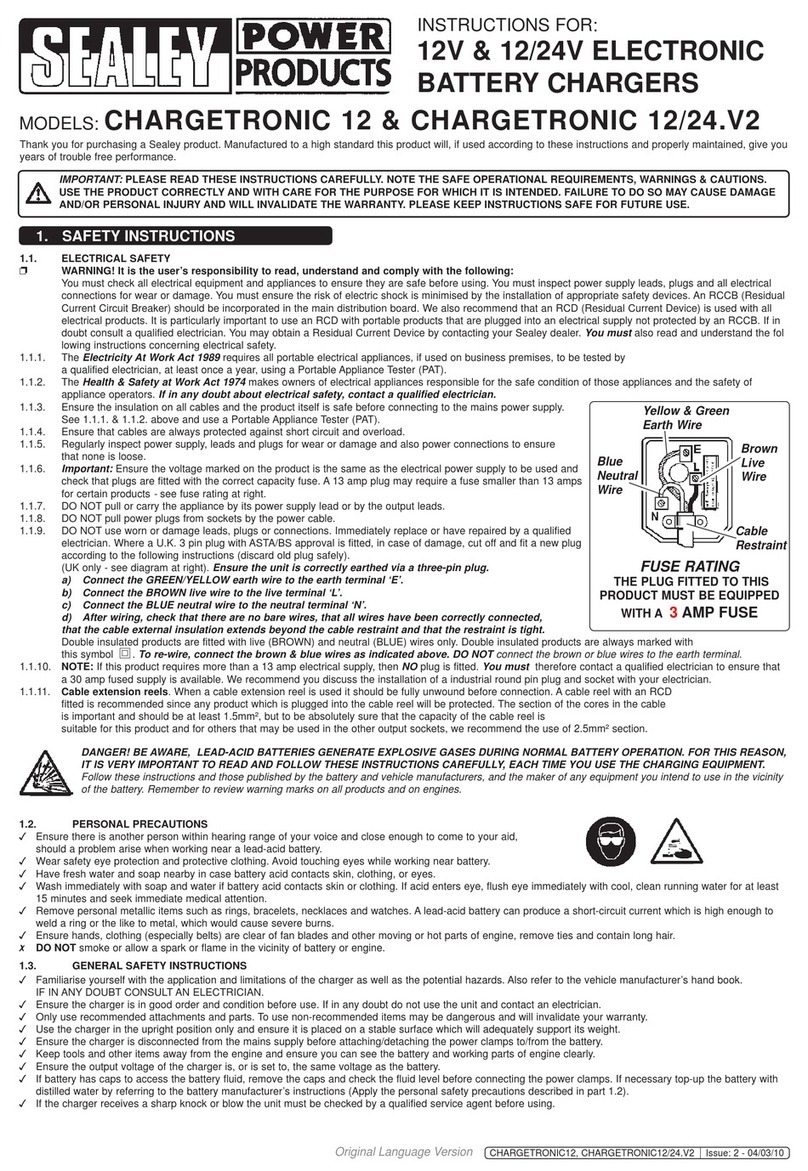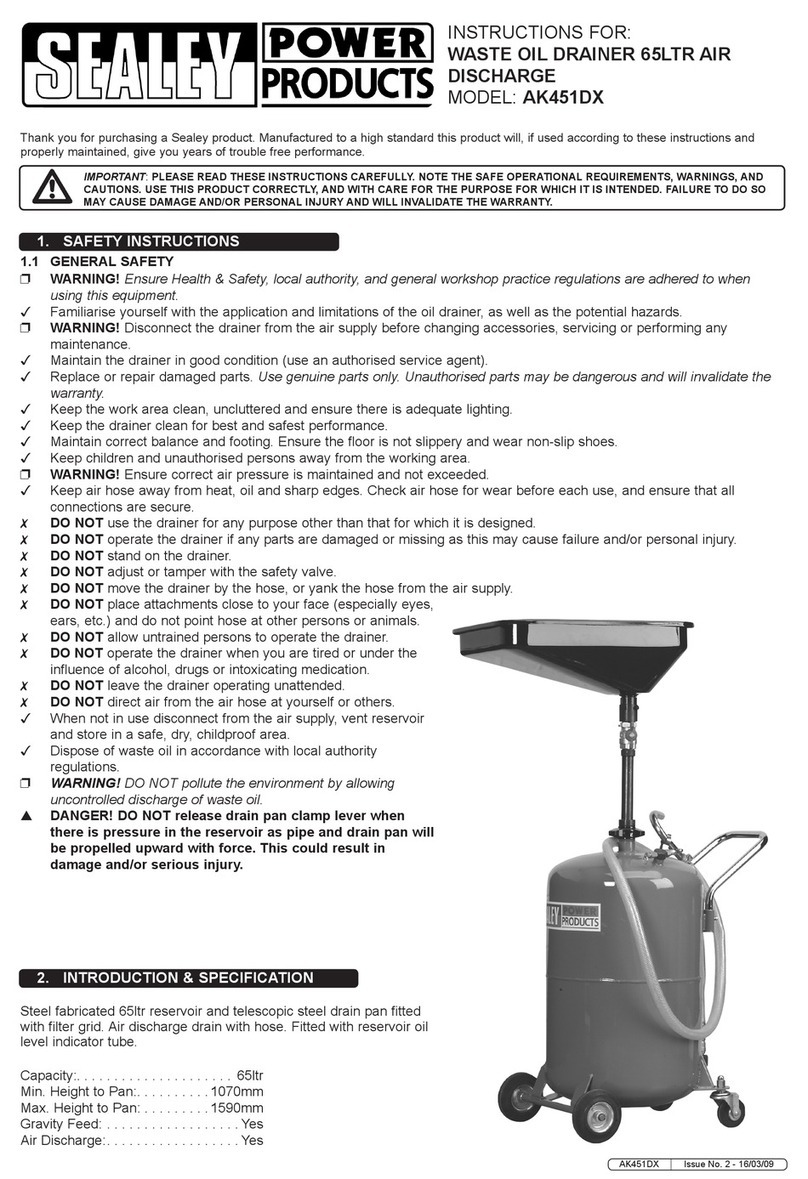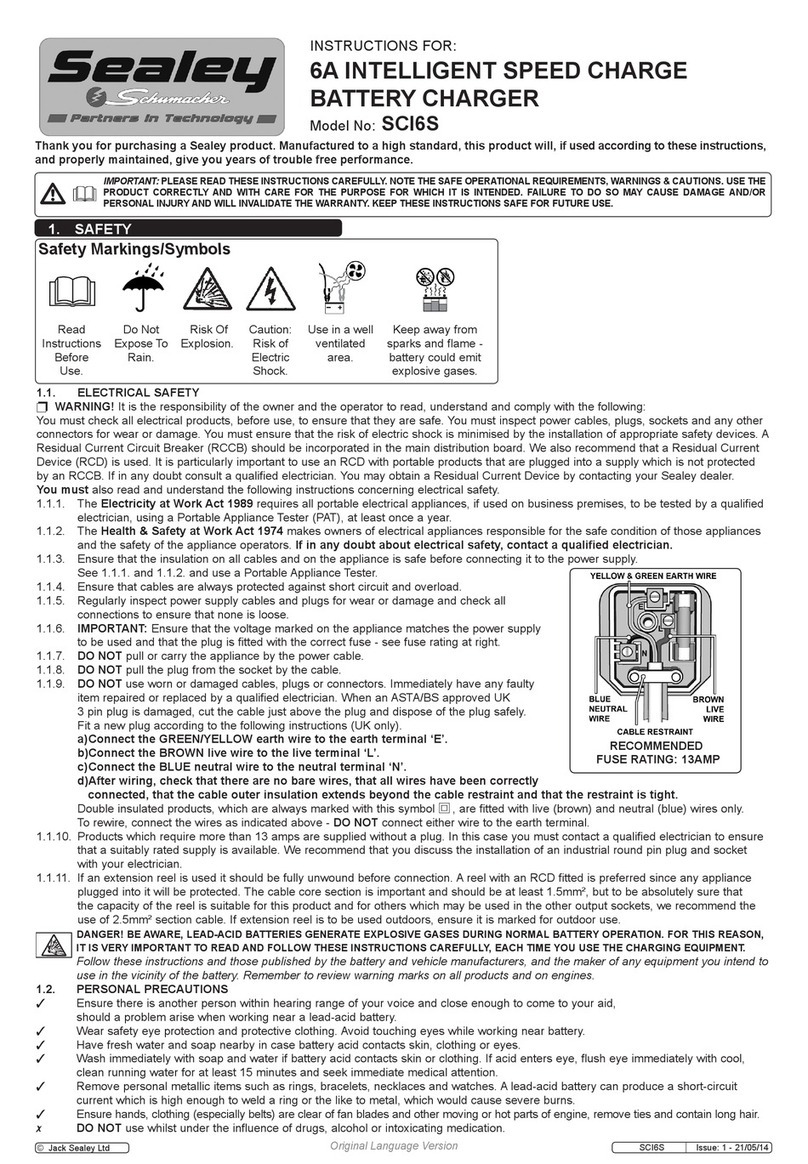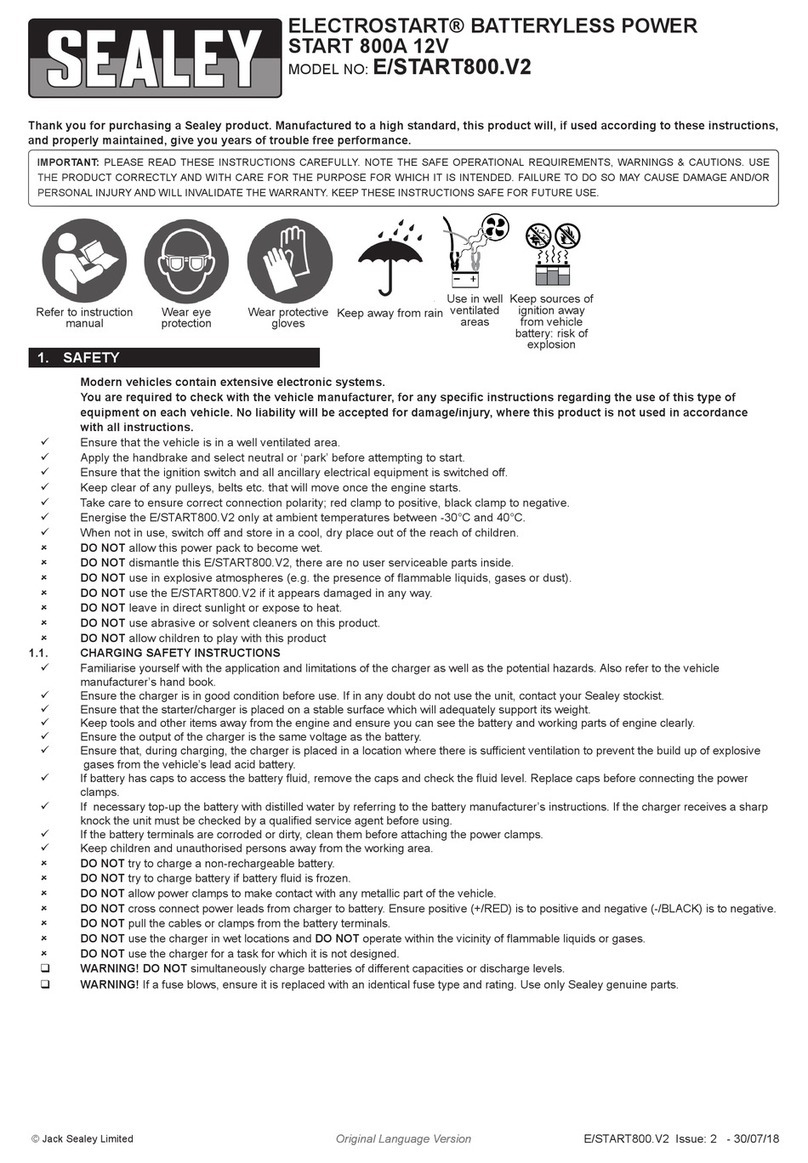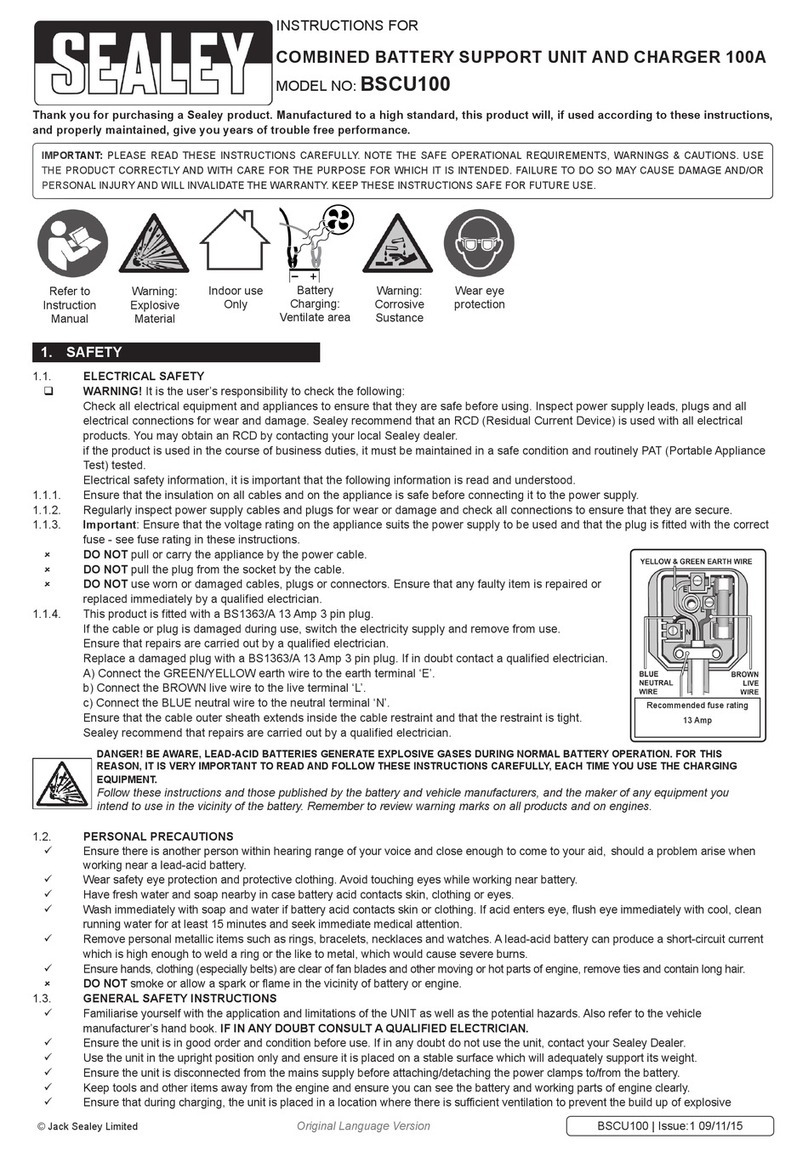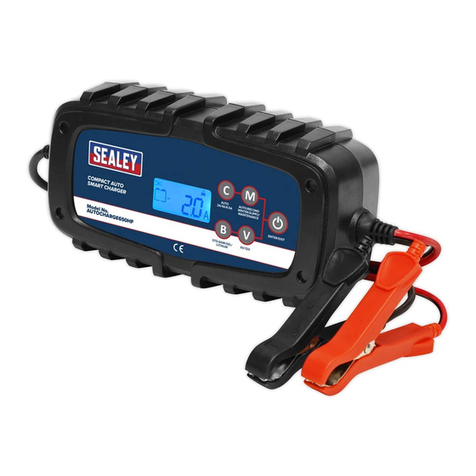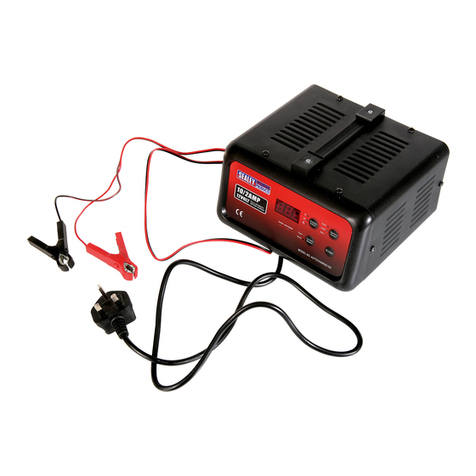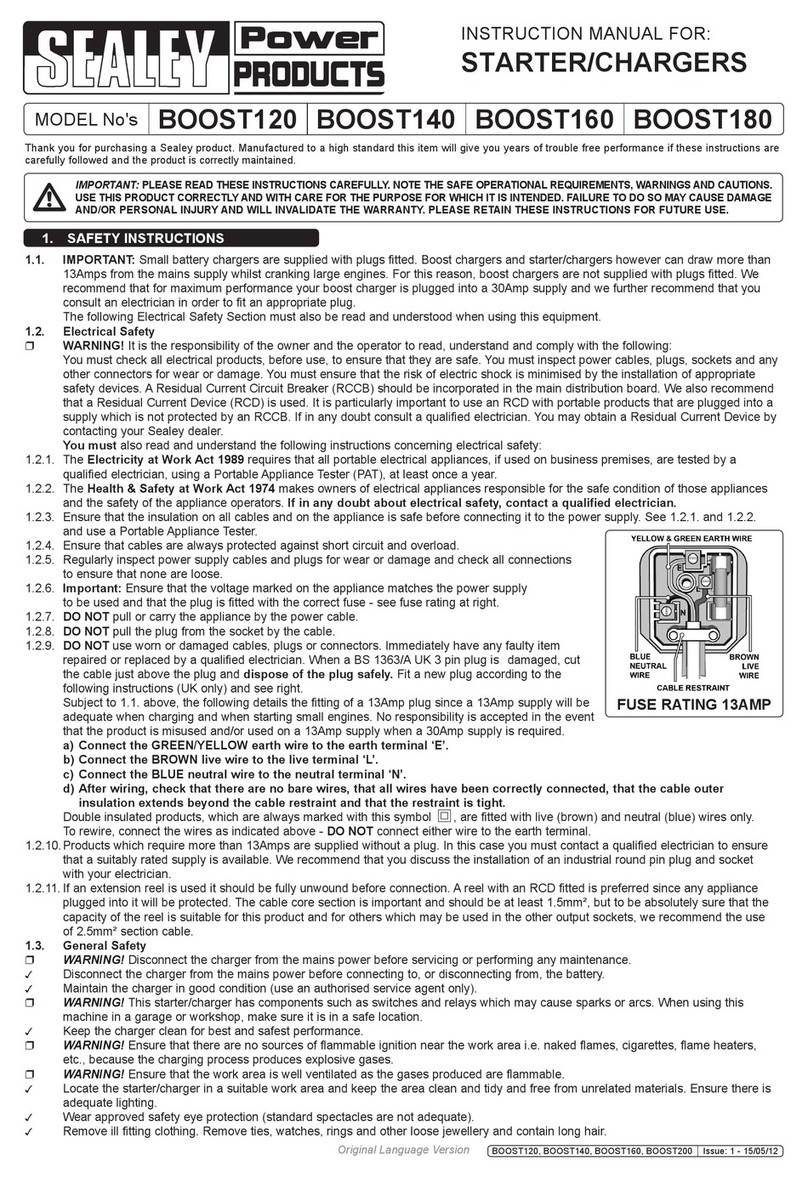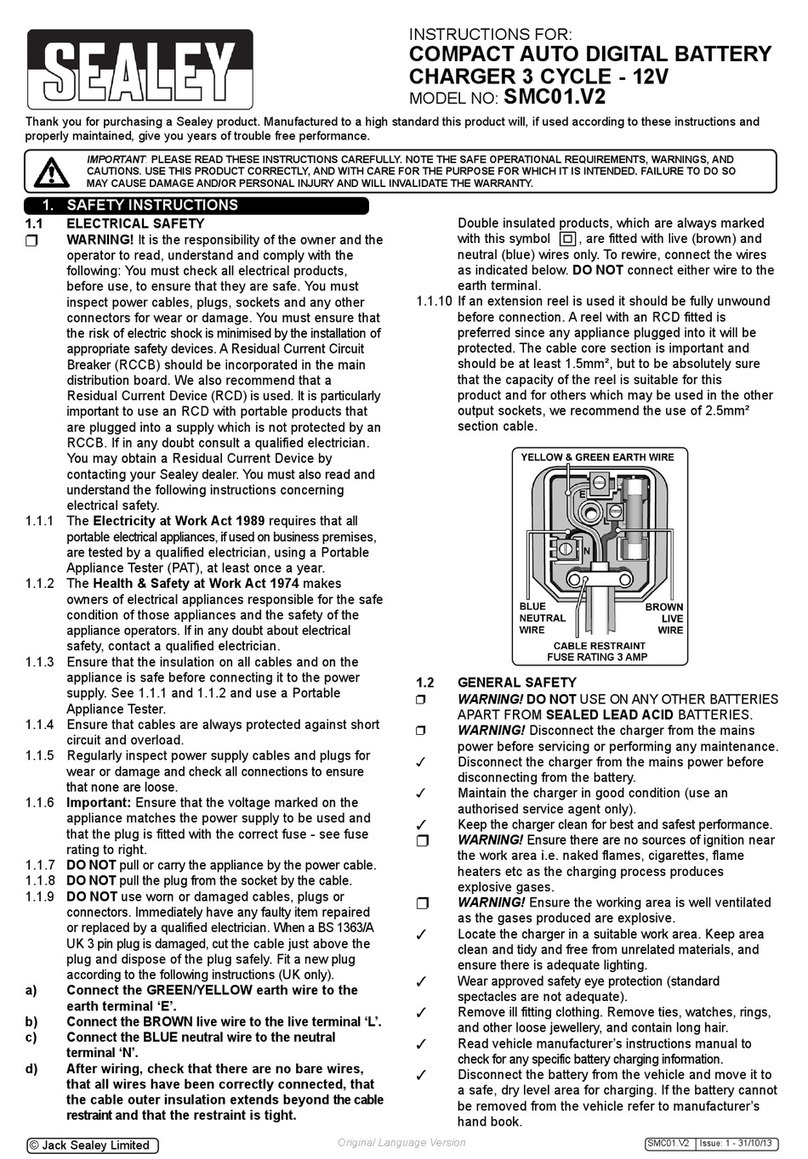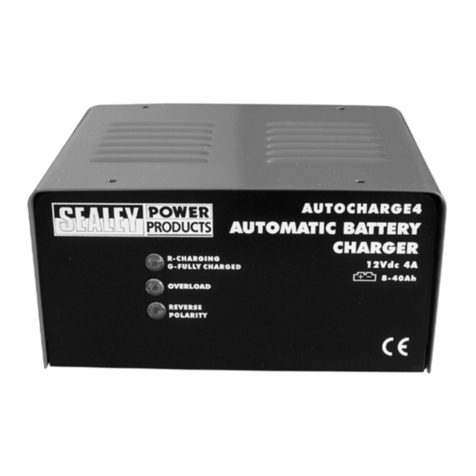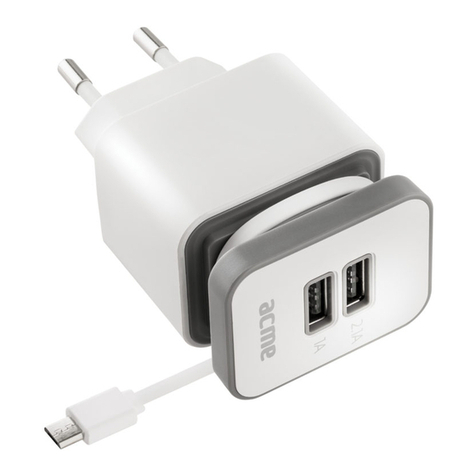
9Cleaning and user maintenance on the appliance shall not be made by children without supervision. That the appliance shall be
disconnected from its power source during service and when replacing parts and, if that the removal of the plug is foreseen,
it shall be clearly indicated that the removal of the plug has to be such that an operator can check from any of the points to which
he has access that the plug remains removed.
9During charging, the battery must be placed in a well-ventilated area.
9The battery charger must only be plugged into an earthed socket-outlet.
9 Thebatteryterminalnotconnectedtothechassishastobeconnectedrst.Theotherconnectionistobemadetothechassis,remote
from the battery and fuel line. The battery charger is then to be connected to the mains supply.
9 Thebatteryterminalnotconnectedtothechassishastobeconnectedrst.Theotherconnectionistobemadetothechassis,remote
from the battery and fuel line. The battery charger is then to be connected to the supply mains
9Examine the battery charger regularly for damage, especially the cord, plug and enclosure. If the battery charger is damaged, it
mustnotbeuseduntilithasbeenrepairedbythemanufacturer,itsserviceagentorsimilarlyqualiedpersonsinorderto
avoid a hazard.
9 Ifthesupplycordisdamaged,itmustbereplacedbythemanufacturer,itsserviceagentorsimilarlyqualiedpersonsinorderto
avoid a hazard.
1.3. PERSONAL PRECAUTIONS
9Ensure there is another person within hearing range of your voice and close enough to come to your aid, should a problem arise
when working near a lead-acid battery.
9Wear safety eye protection and protective clothing. Avoid touching eyes while working near battery.
9Have fresh water and soap nearby in case battery acid contacts skin, clothing or eyes.
9 Washimmediatelywithsoapandwaterifbatteryacidcontactsskinorclothing.Ifacidenterseye,usheyeimmediatelywithcool,
clean running water for at least 15 minutes and seek immediate medical attention.
9Remove personal metallic items such as rings, bracelets, necklaces and watches. A lead-acid battery can produce a short-circuit
current which is high enough to weld a ring or the like to metal, which would cause severe burns.
9Ensure hands, clothing (especially belts) are clear of fan blades and moving or hot parts of engine, remove ties and contain long hair.
8DO NOTsmokeorallowasparkorameinthevicinityofbatteryorengine.
1.4. CHARGING SAFETY INSTRUCTIONS
9Familiarise yourself with the application and limitations of the charger as well as the potential hazards. Also refer to the vehicle
manufacturer’shandbook.IFINANYDOUBTCONSULTAQUALIFIEDELECTRICIAN.
9Ensure the charger is in good order and condition before use. If in any doubt do not use the unit, contact your Sealey stockist.
9 Usethestarter/chargerintheuprightpositiononlyandensureitisplacedonastablesurfacewhichwilladequatelysupportitsweight.
9 Ensurethechargerisdisconnectedfromthemainssupplybeforeattaching/detachingthepowerclampsto/fromthebattery.
9Keep tools and other items away from the engine and ensure you can see the battery and working parts of engine clearly.
9Ensure the output of the charger is the same voltage as the battery.
9 Ensurethatduringcharging,thechargerisplacedinalocationwherethereissucientventilationtopreventthebuildupofexplosive
gases from a lead acid battery, and DO NOT cover or obstruct the charger ventilation louvres.
9 Ifbatteryhascapstoaccessthebatteryuid,removethecapsandchecktheuidlevelbeforeconnectingthepowerclamps.
9 Ifnecessarytop-upthebatterywithdistilledwaterbyreferringtothebatterymanufacturer’sinstructions(Applythepersonalsafety
precautions described in part 1.3).
9 Ifthechargerreceivesasharpknockorblowtheunitmustbecheckedbyaqualiedserviceagentbeforeusing.
9If the battery terminals are corroded or dirty clean them before attaching the power clamps.
9Keep children and unauthorised persons away from the working area.
9 Ensurethereiseectiveventilationtopreventabuild-upofexplosivegases,andDO NOT cover or obstruct charger ventilation
louvres.
9When not in use, store the charger carefully in a safe, dry, childproof location.
WARNING! To prevent the risk of sparking, short circuit and possible explosion DO NOT drop metal tools in the battery area, or
allow them to touch the battery terminals.
WARNING! DO NOTsimultaneouslychargebatteriesofdierentcapacitiesordischargelevels.
WARNING! If a fuse blows, ensure it is replaced with an identical fuse type and rating. Use only Sealey genuine parts.
8DO NOTdis-assemblethechargerforanyreason.Thechargermustonlybecheckedbyqualiedservicepersonnel.
8DO NOT try to charge a non-rechargeable battery.
8DO NOTtrytochargebatteryifbatteryuidisfrozen.
8DO NOT allow power clamps to touch each other or to make contact with any metallic part of the vehicle.
8DO NOTcrossconnectpowerleadsfromchargertobattery.Ensurepositive(+/RED)istopositiveterminalandnegative(-/BLACK)is
to negative terminal.
8DO NOT pull the cables or clamps from the battery terminals.
8DO NOT use the charger outdoors, or in damp, or wet locations and DO NOToperatewithinthevicinityofammableliquidsorgases.
8DO NOT use charger inside vehicle or inside engine compartment.
8DO NOT use the charger for a task for which it is not designed.
2. INTRODUCTION
Combinationunitwithtwochargesettingsandastartfunctiontojumpstartvehicleswithaatbattery.Featureseasy-to-readammeterand
illuminated power switch. Dual output (12 and 24V) and circuitry is protected by a panel mounted fuse. Suitable for garages, workshops and
eetoperatorsrunningcarsandvanderivatives.Built-inpolarityprotection.
3. SPECIFICATION
MODEL NO. SUPERBOOST140.V5 SUPERBOOST160.V6
Cable and Clamp Length 2m 2m
Fuse Rating 13A 13A
Plug Type 3-Pin BS 3-Pin BS
Original Language Version
© Jack Sealey Limited SUPERBOOSTSeries140.V5,160.V6Issue127/06/23



